Preface
This standard is prepared in accordance with GB/T 1.1-2009 “Guidelines for Standardization Work Part 1: Standard Structure and Compilation”. Appendix A of this standard is a normative appendix. If some content in this article involves patent content, the issuing organization of this standard does not bear the responsibility of identifying these patents.
With the rapid development of Mini LED display technology, Mini LED display products have begun to be used in large-screen high-definition displays, such as surveillance and command, high-definition studios, high-end theaters, medical diagnosis, advertising displays, conferences and exhibitions, office displays, virtual reality and other commercial fields. Although Mini LED commercial displays have achieved small-scale commercial shipments, there are still difficulties in mass production technology. The industry lacks uniform standards and urgent efforts are needed to accelerate industrialization. The current global layout is relatively balanced, and the industrial chain is not yet fully integrated. The formulation of this standard will promote Mini LED display technology in China and even the world.
Mini LED Commercial Display General Technical Specification
Chapter 1 Scope
This specification stipulates the terms and definitions, classification, technical requirements, inspection methods, inspection rules, and marking, packaging, transportation and storage requirements of Mini LED commercial displays.
For displays that adopt COB, COG and other packaging forms, please refer to other chapters of this specification.
Chapter 2 Criteria for quotations and references
The following documents are indispensable for the application of this specification. For dated reference documents, only the dated version applies to this specification. For undated references, the latest version (including all amendments) is applicable to this specification.
GB 4208-2017 Enclosure protection grade (IP code)
GB 4943.1-2011 Information Technology Equipment Safety Part 1: General Requirements
GB 9254-2008 Information Technology Equipment Radio Disturbance Limits and Measurement Methods
GB 17625.1-2012 Electromagnetic compatibility limit Harmonic current emission limit (equipment input current per phase ≤ 16A)
GB 20943-2013 Single output AC-DC and AC-AC external power supply energy efficiency limit value and energy saving
GB/T 2423.1-2008 Environmental testing of electric and electronic products Part 2: Test method Test A: Low temperature
GB/T 2423.2-2008 Environmental testing of electric and electronic products Part 2: Test method Test B: High temperature
GB/T 2423.3-2016 Environmental testing of electric and electronic products Part 2: Test method Test Cab: Constant damp heat test
GB/T 2423.55-2006 Environmental testing of electric and electronic products Part 2: Test method Test Eh: Hammer test
GB/T 2828.1-2012 Sampling inspection procedures by attributes Part 1: Lot-by-lot inspection searched by acceptance quality limit (AQL) Sampling plan
GB/T 4214.1-2017 Household and similar electrical appliances noise test method General requirements
GB/T 6587-2012 General Specification for Electronic Measuring Instruments
GB/T 14436-1993 Industrial Product Guarantee Document General Rules
GB/T 17618-2015 Information Technology Equipment Immunity Limits and Measurement Methods
GB/T 20145-2006 Photobiological safety of lamps and lamp systems
GB/T 27050.1-2006 Conformity Assessment Supplier’s Declaration of Conformity Part 1: General Requirements GB/T 27050.2-2006 Conformity Assessment Supplier’s Declaration of Conformity Part 2: Supporting Document SJ/T 11141-2017 Light Emitting Diode ( LED) General Specification for Display Screen
SJ/T 11281-2017 Light-emitting diode (LED) display test method
SJ/T 11363-2016 Limit requirements for toxic and hazardous substances in electronic information products
Chapter 3 Terminology and definition
The standard “SJ/T 11141-2017 LED Display General Specification”, “SJ/T 11281-2017 LED Display Test Method” and the following terms and definitions apply to this specification.
3.1Mini LED
LED devices with chip sizes between 50-200um.
3.2Mini LED display module
A unit composed of Mini LED pixel array and driving circuit with a pixel center pitch of 0.3-1.5mm.
3.3Mini LED display assembly
An independent unit composed of several Mini LED display modules, control circuits, power converters and corresponding structural parts。
3.4 Mini LED display
Mini LED screen body spliced by several Mini LED display modules.
3.5 Mini LED adhesion force
The anti-collision ability of the Mini LED attached to the screen is expressed by the thrust of the Mini LED.
3.6 Dark color uniformity
The color consistency of all structural materials on the surface of the screen in the black screen state.
3.7 Mini LED display luminance view angle
When the brightness in the viewing direction drops to one-third of the brightness in the normal direction of the display, the sum of the angles formed by the two viewing directions on the same plane and the normal direction; divided into horizontal brightness viewing angle and vertical brightness viewing angle。
3.8Positive chip display
Mini LED display screen composed of vertical red LED chips and formal blue-green LED chips.
3.9Multiple chip display
Mini LED display screen composed of vertical red LED chips and flip-chip blue-green LED chips.
3.10 Flip chip display
Mini LED display with pixels made up of flipped red, blue and green LED chips.
3.11 Mini LED commercial display
Mini LED display with smaller pixel pitch, high definition, high reliability, high interface compatibility and easy installation and maintenance.
Chapter 4 Display classification
4.1 Classified by chip structure
Mini LED display can be divided into formal display, mixed display, and flip display according to the combination of chip structure.
4.2 Classified by package bracket
Bracket-type limited integrated package lamp driver separation technology and non-bracket-type integrated package lamp driver integration technology.
4.3 Classified by maintenance method
According to different maintenance methods, Mini LED display can be divided into front maintenance display (or front maintenance display), rear maintenance display (or rear maintenance display) and front and rear maintenance display.
4.4 Sort by display dimensions
According to different display dimensions, Mini LED displays can be divided into 2D displays, 3D displays, and 2D and 3D compatible displays.
4.5 Classified by screen shape
According to the shape of the screen, the Mini LED display can be divided into curved display and flat display.
Chapter 5 Technical requirements
5.1
General requirements
5.1.1 Appearance requirements
The appearance of the Mini LED display should be clean and free of scratches. The surface of the Mini LED should not be damaged or falling off. The appearance of the spliced screen should be a whole, and the surface of the display should be free of color blocks or spots. The ink color consistency shall meet the requirements of Table 1.
5.1.2 Safety requirements
The safety performance of Mini LED display should meet the requirements of “GB 4943.1-2011 Safety of Information Technology Equipment Part 1: General Requirements”.
Other safety requirements shall meet the requirements of 5.7 in “SJ/T 11141-2017 General Specification for Light Emitting Diode (LED) Displays”.
5.1.3 Anti-collision performance
According to the standard “GB/T 2423.55-2006 Environmental Testing of Electrical and Electronic Products Part 2: Test Method Test Eh: Hammer Test”, the Mini LED display module should have sufficient anti-collision ability. After the test the surface of the Mini LED display module should be intact and work normally.
5.1.4 Mini LED adhesion requirements
To test the anti-shock ability of the Mini LED display module, the adhesion of the Mini LED must meet the requirements of Table 2.
5.1.5 Noise requirements
The system noise of the display module composing the LED display should not exceed 30dB(A).
5.1.6 Optical characteristics requirements
5.1.6.1 Maximum brightness
The average maximum brightness of the full-screen white field of the Mini LED display and display module is represented by I, which shall meet the requirements of Table 3.
5.1.6.2 Mini LED display brightness viewing angle
The horizontal brightness viewing angle and vertical brightness viewing angle of Mini LED display and display module should meet the requirements of Table 4.
5.1.6.3 Brightness uniformity
The brightness uniformity of Mini LED display and display module should be judged according to the method of “SJ/T 11281-2017 Light Emitting Diode (LED) Display Test Method”, and the brightness uniformity IGU should meet the requirements of Table 5.
5.1.6.4 Color coordinate error
The white field color coordinate error ∆x and ∆y of Mini LED display and display module should meet the requirements of Table 6.
5.1.6.5 Primary color dominant wavelength error
The dominant wavelength error ∆hD of the primary color of the Mini LED display and the display module should meet the requirements of Table 7.
5.1.6.6 White field color coordinates
The white field color coordinates of Mini LED display and display module should meet the requirements of Table 8.
5.1.6.7 Highest contrast
Under 10±10% lx ambient illuminance, the highest contrast should meet the requirements of Table 9.
5.1.6.8 Color gamut coverage
In NTSC mode, the color gamut coverage of the Mini LED display should meet the requirements of Table 10.
5.1.7 Electrical requirements
5.1.7.1 Grayscale
Mini LED display should support 8bit-14bit grayscale requirements.
5.1.7.2 Frame change frequency
The frame change frequency ƒH of Mini LED display should meet the requirements of Table 11.
5.1.7.3 Refresh rate
The refresh frequency Fc of Mini LED display should meet the requirements of Table 12.
5.1.8 Pixel out of control rate
The pixel out-of-control rate PZ of the Mini LED display when it leaves the factory and the cumulative use of 10,000 hours should meet the requirements of Table 13 and Table 14.
5.1.9 Energy saving
5.1.9.1 Average power efficiency and power factor
At room temperature, the power factor and power conversion efficiency of the Mini LED display power supply should meet the requirements of Table 15 and Table 16, respectively. The power factor is represented by PF and the conversion efficiency is represented by η.
5.1.9.2 Energy level
Mini LED display at 300nit, the energy consumption level E per unit display area should meet the requirements of Table 17.
5.1.10 Electromagnetic compatibility
5.1.10.1 Radio disturbance
The radio disturbance limit of the Mini LED display module should meet the requirements of “GB/T 9254-2008 Information Technology Equipment Radio Disturbance Limits and Measurement Methods”, and the radio disturbance of the Mini LED display module should meet the requirements of Table 18.
5.1.10.2 Harmonic current
Mini LED display module should meet the requirements of “GB 17625.1-2012 Electromagnetic Compatibility Limits and Harmonic Current Emission Limits (Equipment Input Current ≤16A)”.
5.1.10.3 Immunity
The immunity limit of Mini LED display module should meet the requirements of “GB/T 17618-2015 Information Technology Equipment Immunity Limits and Measurement Methods”, see Table 19 below.
5.1.11 Power protection function
The switching power supply of Mini LED display should have under-voltage protection, output over-voltage protection, over-current protection, short-circuit protection, over-temperature protection, etc.
5.1.12 Photobiological safety requirements
The Mini LED screen itself has no blue light hazard. The blue light hazard depends on the design of the video and picture being played. There is not enough data to show the correlation between the display screen and the blue light hazard.
The Mini LED display module needs to be prompted to comply with the requirements of “GB/T 20145-2006 Light and Light System Photobiological Safety” when playing high blue light images for a long time.
5.2
Applicability requirements
5.2.1 Power supply
Unless there are special regulations, the power supply of Mini LED display should meet: working voltage 176-264V~, frequency 48-52Hz. For wide-voltage Mini LED display products, the power supply should comply with: working voltage 90-264V~, working frequency 48-62Hz.
Working temperature and humidity range
Mini LED display should be able to work normally within the ambient temperature -10℃~40℃, relative humidity 10%~90%RH (non-condensing).
5.2.3 Storage temperature range
Mini LED display should be able to be stored in a temperature environment of -40℃~55℃.
5.2.4 Humidity and heat
5.2.4.1
Humidity and heat load
Mini LED display module, under the conditions of the highest working environment temperature and relative humidity of 87%~93%, it should be able to work normally after 8 hours of power on.
5.2.4.2 Constant heat and humidity
Unless otherwise specified, the Mini LED display module should be able to work normally after storage for 48 hours in an environment with an ambient temperature of (45±2) ℃ and relative humidity of 87%~93%.
5.2.5 Working pressure requirements
According to “GB 4943.1-2011 Information Technology Equipment Safety Part 1: General Requirements”, the Mini LED display is suitable for atmospheric pressure at an altitude of not more than 2000 meters. The LED display needs to add a safety warning sign below 2000 meters above sea level in an obvious location.
If the LED display is used in an environment below 5000 meters above sea level, it should comply with the relevant regulations of “GB 4943.1-2011 Information Technology Equipment Safety Part 1: General Requirements”.
5.2.6 Vibration test
Refer to “SJ/T 11141-2017 General Specification for Light-Emitting Diode (LED) Displays” to conduct vibration tests on Mini LED display modules. After vibration test, Mini LED display module should be able to work normally.
5.2.7 Transport test
According to the “GB/T 6587-2012 General Specification for Electronic Measuring Instruments”, the circulation condition level 3 in 5.10.1.3 is performed on the display module. After the test, the packaging box should not have major deformation and damage, and the performance should meet the requirements of product standards.
Enclosure rating
The enclosure protection level of Mini LED display should be tested and determined in accordance with “GB 4208-2017 Enclosure Protection Level (IP Code)”. The enclosure protection level of Mini LED display should meet the requirements of Table 20.
5.3
Resources and environmental protection
The various materials and components used in the Mini LED display should meet “SJ/T 11363-2016 Limitation Requirements for Toxic and Hazardous Substances in Electronic Information Products”.
Especially packaging materials, preferably recyclable packaging materials to reduce the use of disposable packaging materials.
If necessary, relevant declarations of compliance with environmental protection requirements shall be provided. The specific requirements of the declarations shall be based on “GB/T 27050.1-2006 Conformity Assessment Supplier’s Declaration of Conformity Part 1: General Requirements” and “GB/T 27050.2-2006” The conformity assessment supplier’s declaration of conformity Part 2: Supporting documents is implemented.
5.4
Interface, interchangeability, compatibility
5.4.1 Interface requirements
Mini LED display interface needs to meet the following requirements:
5.4.2 Interchangeability requirements
Both Mini LED display module and Mini LED display module should support interchangeability requirements to improve the flexibility of production testing, on-site installation, maintenance, and spare parts provision.
5.4.3 Compatibility requirements
The design of Mini LED display should be designed for safety, electromagnetic compatibility, reliability, easy maintenance, ease of use, environmental adaptability, energy-saving design, environmental protection, etc.
The software design of Mini LED display should meet the functional requirements as the premise, and compatibility should be considered. Mini LED display control software and configuration software upgrades should maintain backward compatibility.
5.5
Structure, material, process
5.5.1 Basic requirements
The structural design of the Mini LED display should follow standardized and platform-based design requirements, meet the characteristics of ergonomics, and have a good heat dissipation structure and heat dissipation measures.
Mini LED display module should be designed with the aspect ratio of “1:1”, “2:1”, “16:9”, “8:9”, “20:9”.
Some structural materials of Mini LED display can be made of steel, aluminum, plastic and other materials, and the structure should be safe and strong. The selection of the display screen material should meet the corresponding environmental protection requirements, flame retardant requirements, anti-corrosion requirements, etc., to ensure that the display screen can work stably for a long time.
The structure of the Mini LED display should meet the installation requirements and maintenance requirements of the screen; the repair process should not destroy the consistency of the ink color on the surface; the internal wiring of the Mini LED display module should be simple and smooth, and meet the characteristics of safety regulations, EMC, easy maintenance, etc.
5.5.2 Structure assembly accuracy
The structure and assembly accuracy of Mini LED display should meet the requirements of Table 22-25.
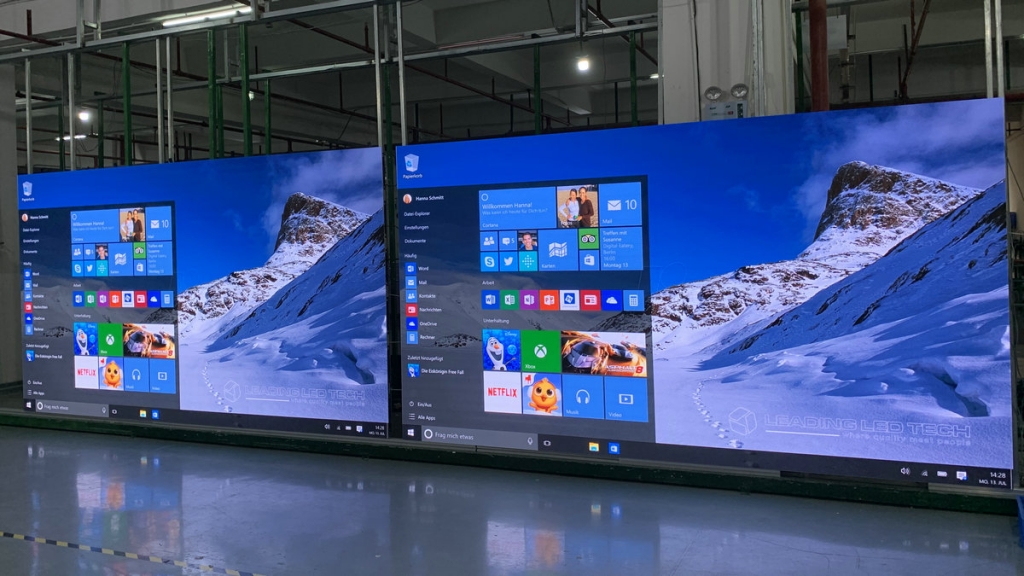
Chapter 6 Inspection requirements
6.1
Test environment conditions
Unless otherwise specified, the test conditions are as follows:
a) Ambient temperature: 15℃~35℃;
b) Relative humidity: 20%RH~90%RH;
c) Atmospheric pressure: 86 kPa~106 kPa.
6.2
Power-on working conditions
Unless otherwise specified, the power-on working conditions are in accordance with the provisions of 4.1.3 in “SJ/T 11281-2017 Light Emitting Diode (LED) Display Test Method”, that is, AC power: (220±22V~)/(50±2) ) Hz.
The grid interference needs to meet:
a) Change of rated voltage ≤3%;
b) Change of rated frequency ≤ 2%;
c) Total harmonic distortion ≤5%.
In addition, the radio disturbance value of the test environment should meet the requirements of “GB 9254-2008 Radio Disturbance Limits and Measurement Methods for Information Technology Equipment”.
6.3
Other software, hardware and equipment requirements
a) Recommended computer configuration: mainstream computer configuration, Windows operating system, graphics card with DVI/HDMI output;
b) The test environment should be free of mechanical vibration, electromagnetic, photoelectric and other interference that affect the test accuracy;
c) Test equipment: color analyzer, light intensity meter, illuminance meter, oscilloscope, vernier caliper, plug gauge, protractor, steel ruler, colorimeter, vibration table, thermometer, photoelectric sensor, image measuring instrument, etc.
Note: The measuring equipment should be measured within the verification period and in accordance with relevant operating specifications.
6.4
Test content and test method
For detailed test methods, please refer to Appendix A.
Chapter 7 Inspection rules
7.1
Inspection classification
This specification stipulates the evaluation of Mini LED display module, the type inspection and delivery inspection of Mini LED display.
7.2
Inspection lot rules
7.2.1 The composition of Mini LED display module inspection lot
An inspection lot for Mini LED display module evaluation can consist of one or several Mini LED display module production batches that meet the following conditions;
Display modules produced with basically the same materials, the same process and the same equipment; the interval between several production batches is usually no more than one week, unless otherwise specified, but no more than one month.
7.2.2 The composition of Mini LED display inspection lot
Unless otherwise specified, a Mini LED display inspection lot can be made up of Mini LED displays manufactured using the same process and the production lot does not exceed one month.
7.3
Mini LED display module evaluation
7.3.1 Inspection timing and inspection responsibility
In one of the following cases, before assembling the Mini LED display, the display module used to assemble the Mini LED display must be evaluated:
(1) Before the first type inspection and delivery inspection of the Mini LED display;
(2) When Mini LED display is restarted after six months of production suspension;
(3) When there are major changes in the key components, circuit design, process, structure and materials of the Mini LED display;
(4) When required by the contract.
The evaluation of Mini LED display module should be carried out by the accredited inspection unit or inspection department.
7.3.2 Evaluation item
The evaluation items and steps of Mini LED display module are specified in the following table, and the detailed test method is in accordance with Appendix A.
7.3.3 Sample extraction
The samples provided for evaluation of Mini LED display modules shall be drawn from the display module inspection lot used to assemble Mini LED displays.
7.3.4 Sampling plan
According to “GB/T 2828.1-2012 Sampling Inspection Procedures by Attributes Part 1: Batch Inspection Sampling Plan Retrieved by Acceptance Quality Limit (AQL)” normal inspection plan, inspection level is II, AQL=1.5.
7.3.5 Unqualified
In the Mini LED display module evaluation process, if there is a fatal defect or two or more non-fatal defects, the Mini LED display module evaluation inspection lot will be judged as an unqualified lot.
7.3.6 Resubmit
When the Mini LED display module is unqualified in the evaluation and inspection, it is allowed to resubmit it after repairing or rejecting the unqualified product, and the sampling plan and non-conforming criteria remain unchanged; if the evaluation is still unqualified after resubmission, the batch is not allowed Mini LED display module to assemble Mini LED display.
7.4
Type test
7.4.1 General rule
The type inspection is a periodic inspection and can only be carried out after the Mini LED display module is qualified as specified in 7.3. In the case of continuous production, it is carried out every 24 months. Change key components, circuit design, process, structure and materials should also be done once. Unless otherwise specified in the contract, the type inspection may be carried out by an approved inspection unit or inspection department, or by the manufacturer.
7.4.2 Test items
Type test items should be tested in accordance with the following table in addition to the regulations in Table 26. Refer to Appendix A for test methods.
7.4.3 Sampling plan
Four sets of Mini LED display modules.
7.4.4 Unqualified
In the process of type inspection, if there is a fatal defect or two or more non-fatal defects, the type inspection will be regarded as unqualified.
7.4.5 Resubmit
When the type inspection is unqualified, it is allowed to resubmit once after repairing or rejecting the unqualified product. The sampling plan remains unchanged, but one fatal defect or two or more non-fatal defects are not allowed.
7.5
Delivery inspection (only for Mini LED display)
7.5.1 Inspection timing and inspection responsibility
The delivery inspection is a batch-by-batch inspection, which can only be carried out after the display module type inspection specified in 7.3 is qualified. Unless otherwise specified in the contract, the delivery inspection can be carried out by an approved inspection unit or inspection department, or by the manufacturer.
7.5.2 Test items
In addition to the provisions of Table 26, the delivery inspection items should also be tested in accordance with the following table. Refer to Appendix A for the test method.
7.5.3 Sampling plan
The sampling plan for delivery inspection is 100%.
7.5.4 Unqualified
Unless otherwise specified in the contract, during the delivery inspection process, if one fatal defect or more than two non-fatal defects occur, the delivery inspection will be deemed unqualified.
7.5.5 Resubmit
When the delivery inspection fails, the first resubmission is allowed after repair, and the sampling plan remains unchanged, but no defects are allowed. Otherwise, the first resubmission inspection will be deemed unqualified. However, if the reason for the failure of the first resubmission is that there is only one fatal defect or two or fewer non-fatal defects, a second resubmission is allowed after the repair, and no defects are allowed. If the second resubmission is still unqualified, it will be rejected.
Chapter 8 Marks, labels, accompanying documents
8.1
Mark
The data and power interface of the Mini LED display module should have corresponding marks to indicate its role or function.
If grounding is required, there should also be a grounding mark complying with “GB 4943.1-2011 Safety of Information Technology Equipment Part 1: General Requirements”.
For those with over-safe voltage, a high-voltage warning mark should also be set.
If the cabinet shell has a high local temperature rise exceeding the safe range, a high temperature mark should also be set.
8.2
Label
Install the product label or nameplate on the appropriate position of the Mini LED display module, which must include the following:
a) Trademark;
b) Product name or model;
c) production date;
d) The name of the manufacturer;
e) Certification mark;
f) Electrical input and output parameters.
8.3
Accompanying documents
According to the requirements of “GB/T 14436-1993 Industrial Product Assurance Documents”, the producer shall provide the distributor or user with the product qualification certificate, that is, the product qualification certificate.
In the package of Mini LED display, there should be a product qualification certificate, product manual, packing list, a list of spare parts and accessories, and a list of random documents.
Chapter 9 Packaging, transportation, storage
9.1
Packaging
Pack in a box that meets the requirements of the outer packaging mark.
The packaging must meet the requirements of moisture-proof, shock-proof, anti-corrosion, anti-collision, anti-extrusion, etc., and the appearance of the packaging must be beautiful.
9.2
Transport
The packaged LED display can be transported by any means of transportation (such as: cars, trains, planes and other ordinary means of transportation), but the transportation process should avoid rain, long sun, contact with corrosive gases and mechanical damage.
9.3
Storage
The storage temperature range of Mini LED display is -40℃~55℃, the relative humidity is not more than 90%, the surrounding environment is free of acid, alkali and corrosive gas, and there is no strong mechanical vibration, impact and strong magnetic field. If the storage period exceeds 6 months, the unpacking inspection should be carried out every 6 months, and lighting and dehumidification should be carried out as required.
Chapter 10 Application environment
Mini LED display is recommended to work within the temperature range of -10℃~40℃ and relative humidity of 10%~90% (no condensation). Mini LED display should be installed on a strong and reliable installation structure without strong vibration.
Mini LED display should not be installed near strong electromagnetic fields and heat sources, and at the same time, avoid acid-base gas or other corrosive gases in the environment.
It is necessary to ensure the stability of the power supply system and maintain the normal levels of frequency, voltage, and current harmonics. The power supply system needs to have grounding design, lightning protection design and leakage design.
Copyright Exclusive LEADING LED TECH ™ If you need to reprint, please indicate the link and source.
Contact: info#leadingledtech.com.


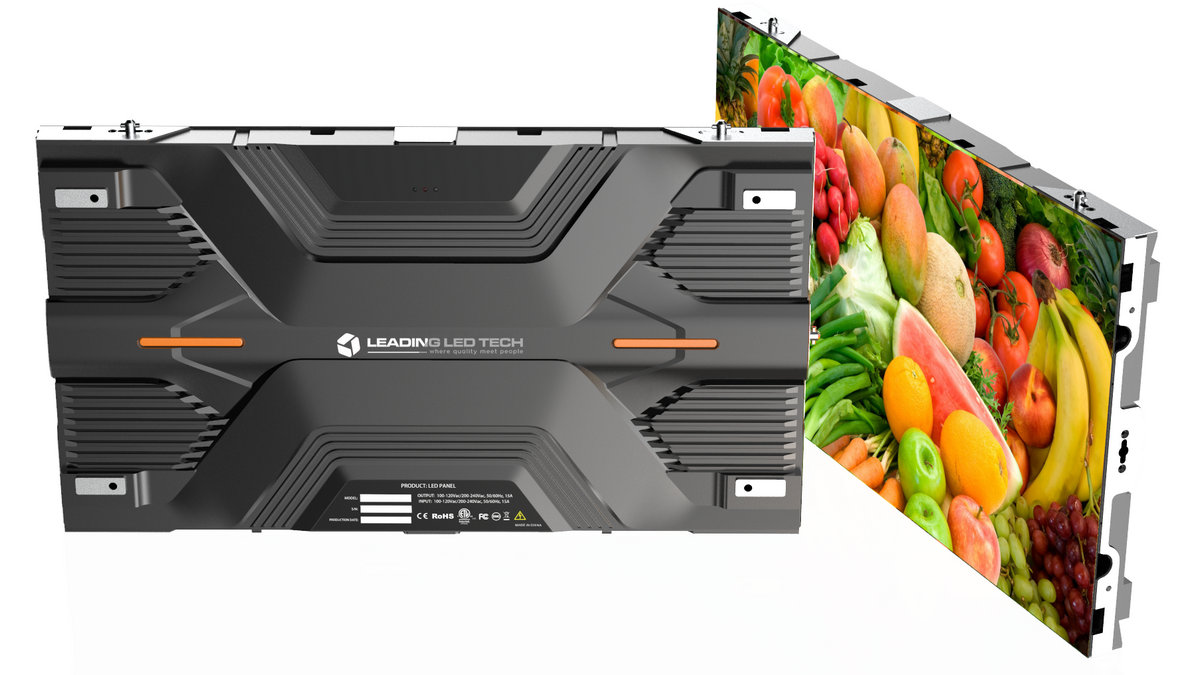
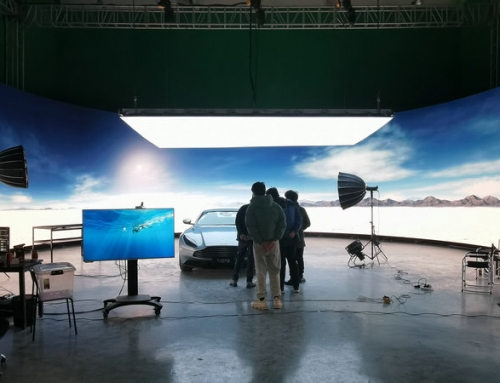
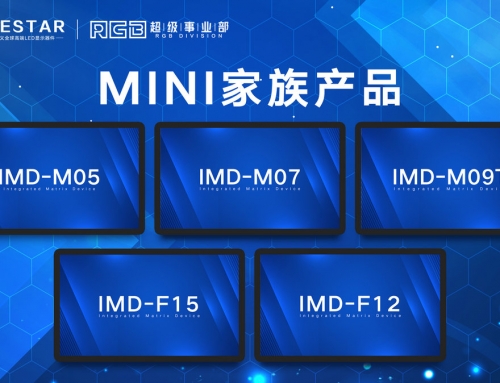
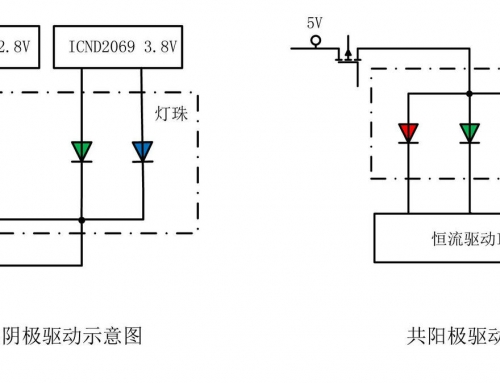
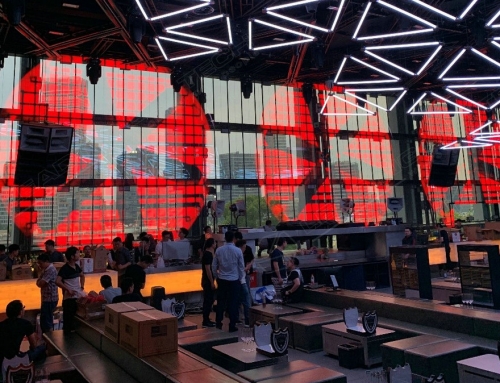
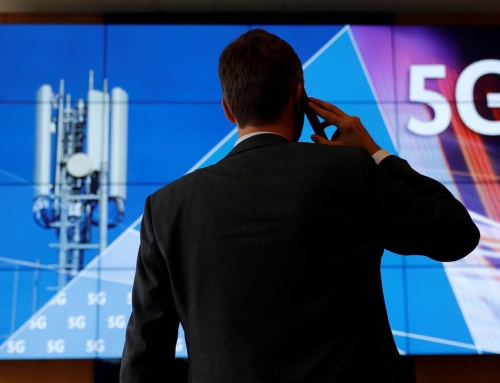
Leave A Comment
You must be logged in to post a comment.